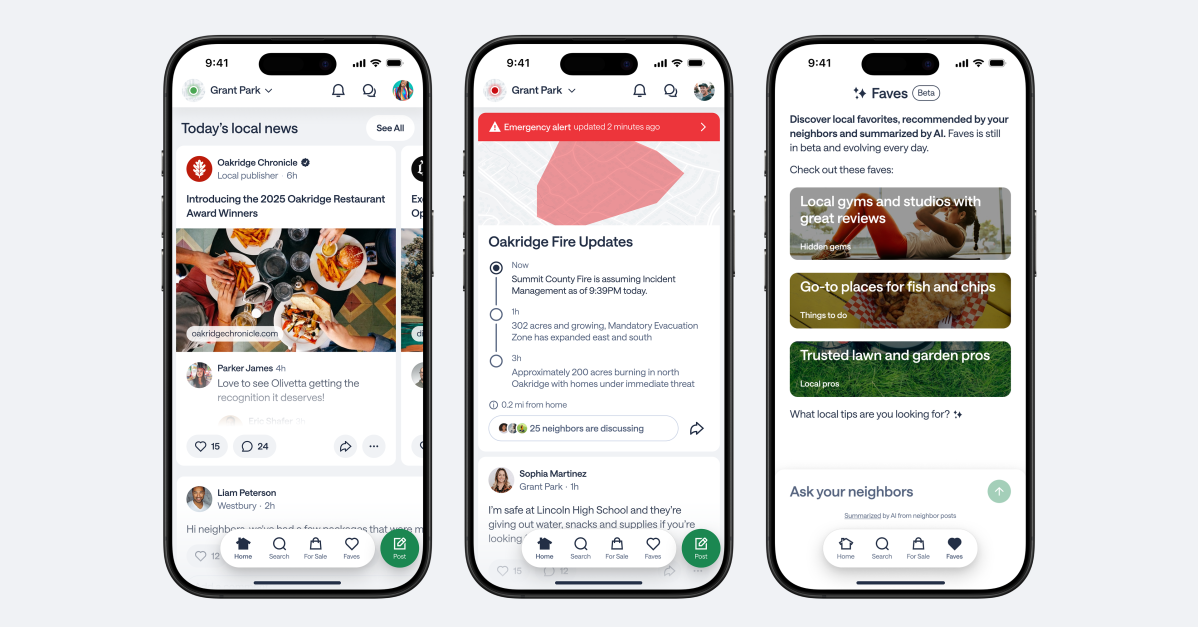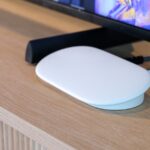In an era of social media-based restaurant reviewers, local neighborhood influencers, and an urgent need for trustworthy on-the-ground reports during moments of crisis, a crowdsourced hyperlocal platform like Nextdoor seems like a no-brainer. Yet something wasn’t clicking. Some people were installing Nextdoor and finding a flood of irrelevant updates and notifications. Others were realizing that, as with other neighborhood-based platforms, their community feeds had devolved into paranoid watch groups, where fear, anger, and negativity were a primary driver of engagement.
As CEO and cofounder Nirav Tolia describes it, there were three key issues with the platform. The first was a lack of content — something Nextdoor had tried to fix by pulling in posts from a larger geographic area, to some users’ chagrin. The second was that useful notifications for things like a construction delay, power outage, or tornado tended to be too slow because users were posting about them once they’d already happened. And finally, the content was simply not high-value enough. “I’m sure that if you use the product, you’re not using it every day the way that you’re using Instagram and the way you’re using TikTok,” Tolia says.
To try and turn things around, the company is overhauling its offerings and flooding the zone with new — and hopefully more useful — content and features.
First, the platform is adding a new interactive neighborhood map called Alerts, which displays nearby emergency situations: fires, severe weather, power outages, and more. Rather than being self-reported by neighbors, the Alerts page pulls information from authoritative sources like power companies, police and fire departments, emergency services, and Weather.com, according to Nextdoor.
Getting reliable, trustworthy information to the public in emergency situations is difficult: social media prioritizes engagement over safety, and government alert systems are sometimes spotty. During the Los Angeles wildfires earlier this year, a small, nonprofit-powered app called Watch Duty became a life-saving resource for residents. Tolia says that user engagement was “through the roof” during the LA fires, and the hope is that Nextdoor can use its precise data to send better emergency alerts. If a power company reports that a few hundred households are affected by an outage, Nextdoor (which has precise home address data from when users signed up) could send an alert to just those people, Tolia says.
Nextdoor has never licensed (and still isn’t licensing) its content to AI companies
To help bring more high-quality content to the platform, Nextdoor is also partnering with more than 3,500 local news outlets in the US, UK, and Canada to prominently feature their work in the app. A rotating carousel of news stories will appear at the top of the landing page, and news coverage will get sprinkled into the main feed of individual posts and the alerts map. The partnership, which has been rolling out over the past few months, is currently unpaid — news outlets just get traffic and engagement from Nextdoor users. It’s likely too early to assess whether the platform can be a major driver of engagement and traffic, but it could help smaller newsrooms get in front of local audiences who care about what’s happening around them. Tolia says Nextdoor will eventually bring in neighborhood influencers, schools, and other community groups — in other words, something akin to a Facebook feed with geographic constraints.
Finally, Nextdoor is taking more than a decade of user data and rolling it into a new feature called Faves, which is an AI-powered recommendations chatbot. Tolia says Nextdoor has never licensed (and still isn’t licensing) its content to AI companies, and its hyperlocal conversations and recommendations aren’t indexed by Google like, say, Reddit threads. But the in-app Faves chatbot uses Nextdoor user data and allows people to ask for things like local yoga studios or places for families to go cycling, for example; the bot pulls and summarizes suggestions from previous conversations. Nextdoor users will see other AI-generated content creep in, too: news articles shared to the platform will have an AI comment posted to prompt conversation related to the story.
Nextdoor is reevaluating one of its fundamental ideological questions here: who counts as a neighbor? What used to be a platform just for individuals now is courting news outlets, community groups, and influencers, as well as adding bespoke AI chatbots to neighborhood groups.
“We’re going to recommit to hyperlocal. We are going to focus on utility,” Tolia says. “We don’t want to be the place where people are just bitching about what they don’t like about the neighborhood.”
Read the full article here















